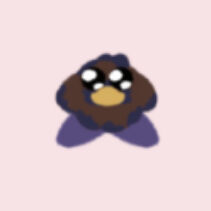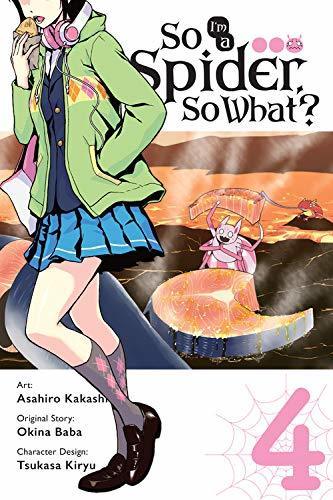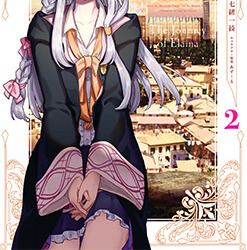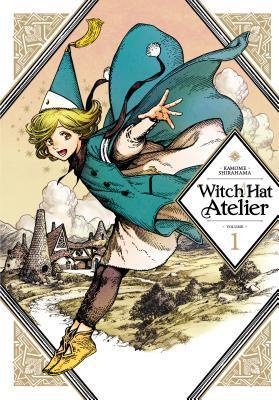#tetete
Text
Who's that ö!?

It's a baby!!

#stupid baby#dumd little baby boy#stupid babyman#he's so tiny#lil man#kirby series#kirby#Metadede#tetete#kirby oc#H does art
48 notes
·
View notes
Video
tetete te
957 notes
·
View notes
Text
hey metadede nation really sorry that took like a year to get around to this !!

clover and tetete belong to @random-rabid-creature
pluto belongs to @yvetteiswhy
equinox belongs to @imelht
valentine belongs to @das-a-kirby-blog
43 notes
·
View notes
Text
An Explanation for Kishic Noble Names
and a quick intro of the Kishic counting system
Hello y'all this is meant to go along with the previous post about Ninma.
Most Kishic indiviuals only have one name, such as Narul, Istek, or Bira.
However within the Kishic Noble tradition, a person's full name typically includes four or five elements depending on the person. These being Number, Given Name, Line, Clan/Branch, and Title.
As an example, Ninma's full name is as follows: Ba Ninma Asheradul Ninjali
Ninma's full name in Kishic is shown below, her given name is underlined as is typical in the Kishic tradition

More explanation of the naming structure below the cut!
1 Number and Kishic Numeric system
An individual is named for the order in which they are born into a family and/or clan. Family lines typically follow a patrillineal structure. When a family branches or splits forming a "clan/branch" the count is restarted for that particular line. As an example, Ninma is the third person given her name within her direct family line, thus Ba. However, should Ninma have a daughter also named Ninma, because that would no longer be in the direct patrillineal line, the count would restart thus her daughter would be Un, and would mark the first member of a new clan/branch.
1. Un
2. Se
3. Ba
4. Ta
5. Su
6. Tu
7. De
8. Teti
9. Sekesh(a)
10. Bet(a)
11. Ku-Bet(a)
12. Se-Bet(a)
13. Ba-Bet(a)
20. Shet(a)
21. Ku-Shet
22. Se-Shet
30. Bat(a)
31. Ku-Bat(a)
40. Taset(a)
41. Ku-Taset(a)
50. Suset(a)
51: Ku-Suset(a)
60: Tuset(a)
61: Ku-Tuset(a)
70. Denet(a)
71: Ku-Denet
80: Tetet(a)
81: Ku-tetet(a)
90: Seket(a)
91: Ku-Seket(a)
100: Kid(a)
2 Given Name
Noble names originate from a prescribed list, The Decreed Callings, created during the era of the united Kishic empire by King Tamel as a way to easily differentiate the noble from the mundane. This list was carved into stone, and typically left as stelae or rock monuments in the majority of Kishic city's thus, explaining the relative homogenity of spelling between much different cities.
The literal meanings of most of these names stem from a dialect of Shabalic now almost entirely forgotten, and thus the actual meaning of each name is of little importance if it is remembered at all. There are exceptions, for example, Ninma, coming from the adjective for small or dimunitve Nina and the word for woman, Ma, quite literally translates to "Small woman". Certain names are more common or traditional within a family.
The majority of names, though not all, have both a feminine and masculine equivalent.
While typically only nobility are permitted to bear these names, if one rises to the ranks of nobility they must choose or have a name from this list given to them, conversely, they may lose the name and replace it with another, often a slightly different version. Eg. Zatar (noble) and Zatur( peasant).
Some peasants, particular those of near noble status, purposely choose these near noble names as a symbol of wealth or status.
Included below are the masculine and feminine equivalent of the thirty-one noble names and some examples of peasant equivalents.
M: Hut(a)bari F: Hut(a)bara (Peasant Hubaru, Hubara)
F: Nin(a)ma (Peasant: Nunima)
M: Zata(a)r ( Peasant: Zatu(u)r)
M: Kotu(u)s F: Kota (Peasant: Kod(o)os, Kata)
M: Akar(a)d F: Akad(a)a (Peasant: Karadu, Karada)
M: Kuru(u)sh F: Kuruma (Peasant: Karu(u)sh, Kurudi)
M: Asher F: Asherta (Peasant: Asher, Aserta)
M: Barunaki M: Baruna (Peasant: Burunaku, Buru(u)n, Buruna)
M: Adakur (Peasant: Adakar)
M: Hiru F: Hiruha (Peasant Shiru, Shiruha)
M: Ladaru F: Ladara
M: Mushadi F: Mushadira
M: Atab F: Atbira (Peasant: Akab, Bira)
M: Adikur F: Adikka ( Peasant: Wa(a)dikir, Wadika)
M: Tizanu(u)sh F: Tizanuma (Peasant: Dizana(a)sh, Dizanuma)
M: Ku(u)bir F: Kubira ( Peasant: Ka(a)dir, Kadira)
M: Enakamer F: Enkama (Peasant: Enkam(i)ish, Enkima)
M: Nas(i)ib F: Nasiba ( Peasant: Na(a)sh, Nashiba)
M: Ham(a)an F: Hamana ( Peasant: Han(a)an, Habana)
M: Ta(a)mel F: Ta(a)melha ( When talking about Ta(a)mel the founder, typically referred to as Ja(a)lT(a)amel or Great Tamel) ( Peasant: Da(a)mul, Da(a)melha)
M: Semaki F: Sema (Peasant: Si(i)m, Suma)
M: Gelabi F: Gelaba ( Peasant: Galari, Garabi)
M: Mosiru F: Mosira (Peasant: Misiru, Misira)
M: Faru(u)t F: Farutima
M: Keri(i)m F: Kerima
M: Ba(a)lek F: Balekira
M: Fi(i)fnu F: Fifina
M: Nabiru F: Nabira
M: Bazu(u)s F: Baza
M: Uridush F: Uriduma
M: Zeni(i)t F: Zenita (Zeniit is both feminine and masculine in Shabalic)
3 Line
Most noble families trace their ancestry back to a single famous individual, typically a legendary or influential figure. It is not uncommon for nobles to rename their familiy line as a way to improve their standing, nor is it common for families to claim descendancy from mythical figures. Additional it is often the case that multiple families may claim descendancy from the same ancestor.
On rare occassions, a person may choose to start a new line, with themselves as its root, though this is very rare, and typically reserved for kings and usurpers.
Examples:
The Line of Asher- Asherdul
The Line of Tamel ( The most commonly claimed line, 1 in 10 noble families use this title)- Tameldul
The Line of Lat (An entirely fictional character)- Latdul
The Line of Akard- Akarddul
4 Clan/Branch
As was previously explained, a branch most typically forms as the result of a deviation from the direct patrillineal line, in these instances the branch name is typically merely a second number. Typically the direct family line does not have a branch or clan name.
In cases of adoption or as recognition for a particular trait or achievement from a member of line, or conversely as a mark of punishment, a new name may be awared/inflicted on an individual and thus their descendants forming a "clan". Clan's are typically signified by the ending -di.
The creation of new clans (not branches) must be approved by the highest authority of that particular city-state, usually the monarch. A member of that line does not have to be the one to produce a petition for the recognition of a new clan, though they must be noble.
Examples:
Den Kotus Ladara(a)dul Hirudi Ekiku
The Clan of Hiru (A famous warrior)
Se Atab Ku(u)birdul Ba Unku
The third branch of the Line of Ku(u)bir
Un Barunaki Farutimadul Gomandi Kikunku
The Large (fat) Clan (This was unlikely chosen willingly, and was likely the result of a petty squabble or some afront)
Title
Held by many but not all nobles, this is simply a reflection of their job or ranking within a city-state's hierarchy.
Examples
Jal/Jali- King/Queen
Ninjal/Ninjali- Prince/Princess
Unku/Unma- (Generic) Lord/Lady literally One Man/Woman
Ekiku/Ekima- Horse man (Mounted warrior/horse keeper)
Ekijalku/ma- Charioteer (typically more esteemed than Ekiku)
Kikunku/ma- Master of Grain (can refer to those in charge of both granaries/and the production of beer for a royal household)
Shukalajal/i- Spearmaster literally Great Spear (Typically the senior guard and champion of the monarch)
@patternwelded-quill @flaneurarbiter @skyderman @blackblooms @roach-pizza @illarian-rambling @dezerex @theocticscribe , @axl-ul
#writeblr#writing#fantasy#worldbuilding#fantasy writing#queer fantasy#testamentsofthegreensea#fantasy world#wip#conlang#conscript#world building
16 notes
·
View notes
Text
i think it’s so funny how the hunger games fandom collectively decided that peeta’s two unnamed brothers were rye and bran because those were bread-related names. like imagine if he had more than the two brothers. anyways here’s an incomplete list of other bread-related words they could have used (from most to least sensical) (coming from a baking and pastry student currently taking their bachelor-level bread lab) (no i will not be using all the fancy letter accents for the french words don’t come at me):
levain
biga
emmer
naan
barley
kamut
tetet
spelt
autolyse
ciabatta
focaccia
einkorn
poolish
boule
batard
baguette
bagel
pate fermente
dough hook
9 notes
·
View notes
Text









Comics Read in 2023:
Demon Slayer: Kimetsu no Yaiba Vol. 7 by Koyoharu Gotouge (2017)
Demon Slayer: Kimetsu no Yaiba Vol. 8 by Koyoharu Gotouge (2017)
So I'm a Spider, So What? Vol. 4 by Asahiro Kakashi & Okina Baba (2018)
I Was Reincarnated, and Now I'm a Maid! Vol. 1 by Natumse Tamayura & Tetete Tanaka (2019)
Wandering Witch: The Journey of Elaina Vol. 1 by Jougi Shiraishi & Itsuki Nanao (2019)
Wandering Witch: The Journey of Elaina Vol. 2 by Jougi Shiraishi & Itsuki Nanao (2020)
Witch Hat Atelier Vol. 1 by Kamome Shirahama (2018)
Sacrificial Princess and the King of Beasts Vol. 4 by Yu Tomofuji (2017)
Sacrificial Princess and the King of Beasts Vol. 5 by Yu Tomofuji (2017)
[ID: Covers of the aforementioned books. End ID.]
#gigi.txt#2023media#i liked this arc of demon slayer. i think they did a good job of making a character you really only met this arc#into someone you're genuinely upset to see go#the thing is with demon slayer is i can see why ppl go nuts abt it#because animated its such hot shit#but in terms of manga its... fine? like its not BAD for the most part but its just.#im enjoying it tho#so im a spider so what continues to be incredibly unhinged. 10/10. she has multiple brains now#love that for her#i was reincarnated maid was very boring. do not rec. not continuing.#wandering witch was also boring.......... but with a hint of interesting to it. i have one more manga volume 2 read and then im done#and then i'll check out the light novel. manga won't keep on top of but novel might be okay!#to the shock of no one i fucking loved witch hat atelier and absolutely will continue w/ the series. should've read it earlier. obsessed.#and i liked this arc of sacrificial beasts but the series continues to be a very unsubtle metaphor for Discrimination Being Bad.#love anubis just trying to get the mc kicked out and the king is like. anubis u can keep being an asshole bc ur my bestie. yeah hes a fave
3 notes
·
View notes
Note
bebebe
cecece
fefefe
gegege
hehehe
jejeje
kekeke
lelele
mememe
nenene
pepepe
qeqeqe
rerere
sesese
tetete
veveve
wewewe
xexexe
yeyeye
zezeze
Are you allowed to leak Dedede's family tree from Kumazaki like that?
50 notes
·
View notes
Text
Foods of Tetet Valley

An assortment of foods mentioned in my WIP novella The Gift of Gloves. Everything is to scale, with the zetin being around the size of an apricot.
Txentx are omnivorous, but most cultures skew heavily herbivorous.
More explanation on Gexgean trees and “fruit” here.
Zetin: A “shelled fruit” with sweet, juicy flesh. Like all shelled fruits, it is eaten after it falls from the tree and cracks open on impact.
Zelzin: An uncommon soft-skinned fruit. Grows on a short species of tree. It has a subdued flavour, almost cantaloupe-like.
Sliced bark: Cut from trees and left to dry, upon which it becomes softer. This is the result of certain fibres in the bark degrading (Gexgean tree bark has a different structure from its Earth equivalent). Pleasantly savoury, a bit spicy on the inside surface.
Under-snow moss: A chemosynthetic psychrophilic organism. “Blooms” in winter, goes into cryptobiosis at temperatures above 3 C°. Tasteless with a spongy texture, so no one likes it. Only eaten if food stores are running low.
Leaves of various plants: The actual main food source. Txentx can digest cellulose-equivalent, but they prefer to eat softer, floppier leaves.
Dried meat: Reserved for special occasions. Dried by rubbing salt into it (the Valley has some caves with sizeable salt reserves) and leaving it out.
4 notes
·
View notes
Text
KOJI TETET NOSIS
A
DA DRUGI NEZNAJU
?
5 notes
·
View notes
Text
WHAT

TWO BABYS!?

#the theys#pls notice Tetete's plataform shoes they are so funny to me#clover was born with a weird feetsie coloration lmao#two babys...#kirby series#kirby#kirby ocs#metadede#H does art#Two stupid lil babymans...#clover#tetete
41 notes
·
View notes
Note
P as sapetia. Tpape ot sirueppa. Atp p kate tetet ktojt peteap.
wh
0 notes
Text

Kajai 9 mėnesiai. Sveria 9.3 kg, ūgis 74 cm. Galvytės apimtis -45cm.
Šiandien gydytoja apžiūrėjo, sakė kad viskas puiku, tik jau turėtų stotis mažylė pati, ir bandyt žengti žingsnį. Truputį pritingi dar tai reiks pasekti, per mėnesį reikia kad atsistotų.
Taip pat gan trumpas pasaitėlis viršutinės lūpos. Darosi tarpukas tarp dantų, siunčia pas veido ir žandikaulio chirurgą konsultacijai.
Šliaužia atbulomis, stojasi ant 4, bando ropoti. Sako “mamama” “tetete” “dada” ir tt.
Turi 4 dantis. Miega du kart dienoje. Dažniausiai mūsų rytas prasideda apie 7 val. ir taip pat ruošiamės miegoti 7 val. vakare.
Vis dar labiausiai mėgsta miegoti ant rankų. Taip išmiega geriausiai. Naktimis miega neblogai, jei neauga dantukai, keliasi vos kelis kart pavalgyti arba prisiglausti ar soskės. Žinoma visokių naktų būna.
0 notes
Text
Names generated from Egyptian and Brythonic deities, excluding the letter "S"
Abelau Abelen Abelenth Abitah Abnodet Abnodetia Abuka Adjed Adjededet Adjet Adjwet Adrau Aetater Agrobori Alata Amapi Amardun Ambrit Amehet Amenthu Amhetetef Amhezmu Amhota Ammio Amnemau Amped Ampedu Ampepef Ampertah Ampet Amullat Amullotet Amunutut Amutawy Amutu Ancamhep Ancamhotu Ancamun Ancankout Ancardu Ancartum Ancarum Andam Andama Andat Andia Andianhu Andonatu Andonthur Andonut Anduin Anduinum Aneher Anemen Anemet Anenhu Anepwawy Anernerta Aneth Anhuet Aniae Aniania Ankoutu Ankoutum Annef Anneh Annemaf Annia Anniat Annotenu Annut Anodet Anodetet Anodetio Anpef Anpep Anpet Antartu Anther Antia Antretah Antri Apomona Apona Aponia Aponna Aponotu Aponti Aponu Arabi Aranoth Ardullat Arenhor Arentum Arindun Artawy Arteneit Artret Artut Arudia Atara Atenebana Ateper Atephit Aufankou Avenepona Avennet Avertren...
Baahet Baalau Baatin Baatum Balat Balatepep Balio Banatgeb Bancamu Bandonia Banebdjet Banehit Banhu Bankou Banoth Bantum Banum Baped Bapomak Barenema Baridatet Barit Bartawy Bartum Batah Batio Batum Bekau Beker Bekher Belat Belatat Belen Beleneit Belennunu Belio Bellotera Beneh Bethy Betiatum Betta Boridat Bridarum Brigankou Brina Brithu Bucadjet Bucamen Bucammit Buker Buket Buketa Buxen Buxenubit Buxenuter Buxoviria Cadrau Camau Camenhu Camet Cametia Camna Camogmina Camorvet Cancamna Canhu Carapedun Carum Certrete Cetepomo Cetiroth Cicollio Cicur Cicura Cidatou Cidia Cimbi Cimeh Cimheka Cimhorvo Cimhota Clotara Cocimer Collo Collotona Collotou Conat Condrobal Conia Conianput Coniatu Conna Connia Connuta Contep Contu Covankou Covanner Covitawy Damau Damhep Damor Deneponu Fagra Gebantet Gebetia Gebuketet Geret Grobor Hafded Hafdete Hatep Hatete Hatetou Hatmeh Hatmet Hatucer Hatut Hedamna Hededamu Hedema Heheh Hehit Hekau Hekhehet Hekhmehit Hekhnum Henef Heneteret Henut Hepondam Heraet Hertet Hetef Hetep Hettah Horvenhu Hotef Hothy Hueta Ianema Iantiah Iantutar Iatep Imbriovet Imenet Imhehmeri Imheker Imhep Imhondu Imhota Intio Inutinnut Khbelatum Khbet Khedet Khetawet Khetepet Khetet Khetontia Khezmut Khmehek Khmehekau Khmerty Khmet Khotet Khothor Laterket Latet Lenep Lenna Lenpete Lenput Lentiana Lenuphita Lenut Leucete Luina Luxeneta Luxovanep Luxovanth Maalat Maalau Makhep Maniae Manpet Mapet Mapomaf Mapomar Maranete Maridia Marnutut Marty Marum Marvetat Maufagra Meheh Mehekau Mehetia Mehmer Menep Menet Menevinna Menut Merta Mertefer Metawy Metep Methenthy Metonodet Mettawy Mnatou Mnebdjet Mnementia Mnenhu Mnextio Monia Monna Monnun Monthy Monut Mullat Mullatgeb Muluinth Mutet Nebet Nefnunut Nehek Neheka Neheneh Nehitawy Nehmeheth Nekau Neket Neketou Nemaah Nemaalat Nemaf Nemakera Nemanput Nemehit Nenef Nenet Nenput Nentu Nenunemet Neretef Netenna Netenut Netep Netia Nettawy Nevit Nextiomo Nobentet Nodet Nothonnia Nuphit Nuteridat Ogmintu Ogmintum Ogmio Ogmit Paket Pakhnut Ptabit Ptaher Ptardu Ptaret Ptarvo Ptawet Qeten Qetep Raneheka Rankou Rantri Rantut Rebdjet Renextia Renhura Rentu Renum Retera Retwer Rontin Rothuet Rotum Rudinum Tankout Tanubith Tarty Tarudinna Tawerenet Tawernut Tenhu Tenut Teperiat Tepet Tepwawer Terte Teten Tetet Tetiricur Thedet Thothoth Thotu Tobek Tonnep Tretep Tretet Tuchitat Uneit Unnia Venum Vetep Vettawy Vhenun Vherit Vheta Vhezmuten Vinnia Vitat Wadjed Wadjwen Wadrau Wawen Wawepet Wawer Werebaah Weret Werket Werty Wetwernut Yammio Yammitawy Yamona
#444 names#444names#dnd names#fantasy names#name stash#fantasy name#names#markov gen#markovgen#character names
0 notes
Text
Franz after I say something that is completely true and he knows it: teh tetete teteh teh!
0 notes

